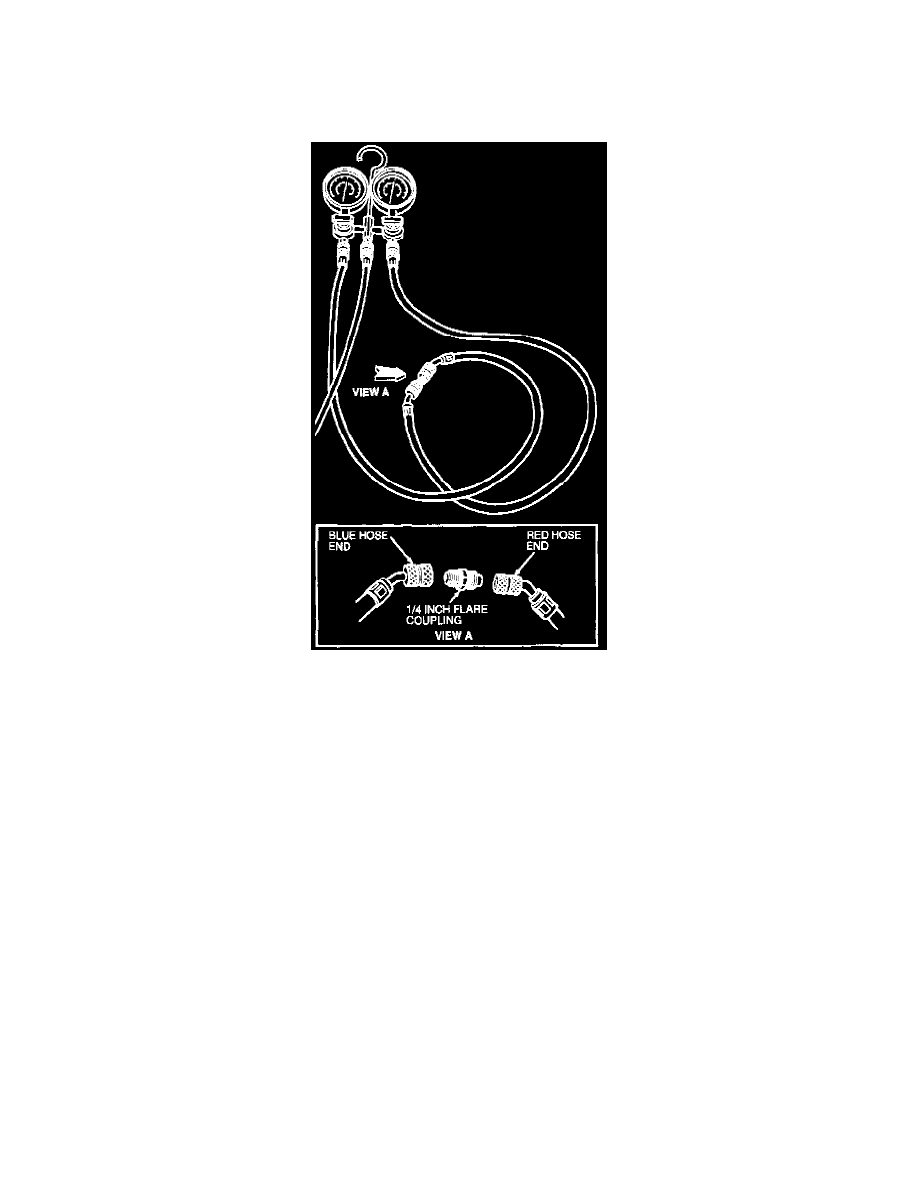Mustang GT V8-4.6L SOHC VIN X (1998)

Evaporator Core: Testing and Inspection
ON-VEHICLE LEAK TEST
If an A/C evaporator core or A/C condenser core is suspected of leaking, the leak must be verified prior to removing the component from the
vehicle. This leak test should be performed as shown below. DO NOT rely solely on the results of an electronic leak detector as chemicals other
than R-134a will activate the leak detector.
1. Verify that the manifold gauge set is capable of holding vacuum.
a. Connect the red and blue hoses together using a 1/4 inch flare coupling.
b. Connect the gauge set yellow hose to a known good vacuum pump.
c. Turn the vacuum pump on and open both gauge set valves.
d. Operate the vacuum pump for one minute and close both gauge set valves. The low-side gauge should indicate approximately 101 kPa (30
in-Hg) of vacuum.
e. Allow the gauge set, with vacuum applied, to set for at least 30 minutes.
f.
If the gauge reading drops during that time, the gauge set hose connections, gauges or valves are leaking and should be repaired before
proceeding with the leak test.
2. Following proper procedures, discharge the A/C system. See: Service and Repair/Discharging and Recovery
3. Disconnect the suspect A/C evaporator core or A/C condenser core from the A/C system. DO NOT leak test an A/C evaporator core with the
suction accumulator/drier attached to the core tubes. Refrigerant outgassing from oil and desiccant in the suction accumulator/drier will
indicate a false leak condition.
4. Clean the evaporator or condenser core tube fittings.
5. Connect the appropriate test fittings from Rotunda A/C Test Fitting Set 412-DS028 (014-00333) or equivalent to the evaporator or condenser
tube connections.
6. Connect the red and blue hoses from the manifold gauge set to the test fittings on the A/C evaporator core or A/C condenser core. Connect the
yellow hose to a known good vacuum pump.
NOTE: The automatic shut-off valves on some gauge set hoses do not open when connected to the test fittings. If available, use hoses without
shut-off valves. If hoses with shut-off valves are used, make sure the valve opens when attached to the test fittings or install an adaptor which
will activate the valve. The test is not valid if the shut-off valve does not open.
7. Open both gauge set valves and start the vacuum pump. Turn the A/C system blower on low and allow the vacuum pump to operate for a
minimum of 45 minutes after the gauge set low pressure gauge indicates 101 kPa (30 in-Hg). The 45-minute evacuation is necessary to
remove any refrigerant from oil left in the A/C evaporator core or A/C condenser core. If the refrigerant is not completely removed from the
oil, outgassing will occur. This will degrade the vacuum and appear as a refrigerant leak.
8. If the low pressure gauge reading will not drop to 101 kPa (30 in-Hg) when the valves on the gauge and manifold set are open and the vacuum
